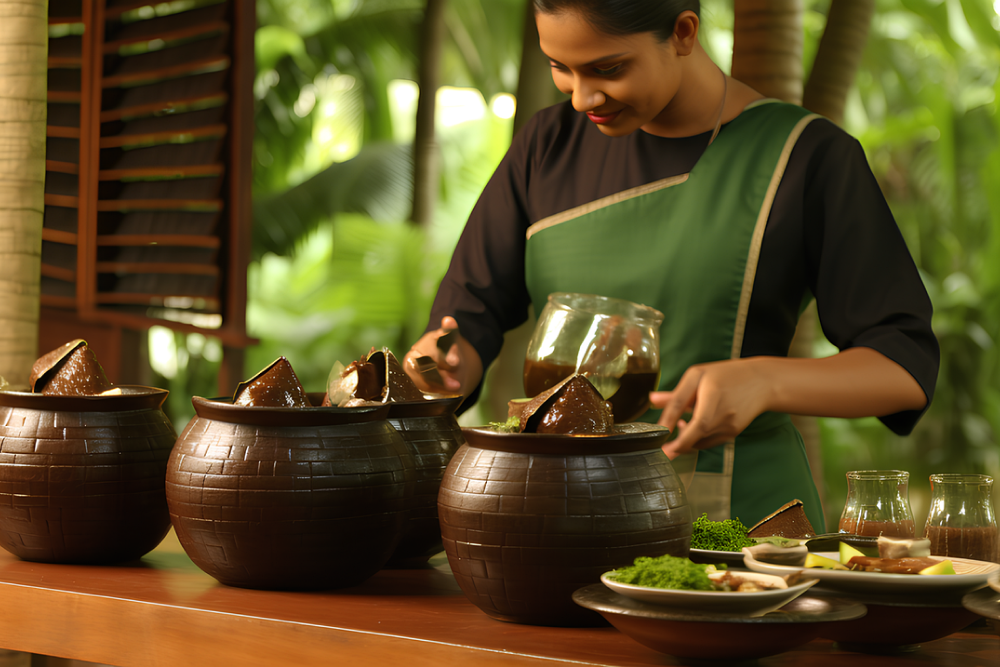How Panchakarma Supports Ayurvedic Treatment for Chronic Diseases?
06 Jan 2025 1 Comment Ramamoorthi M
Chronic diseases have become a major health concern, leaving many of us searching for long-term solutions that don’t just suppress symptoms but address the root cause. Here’s where Ayurveda, the ancient Indian system of medicine, shines with its holistic approach to health. Among its many therapies, Panchakarma stands out as the cornerstone of Ayurvedic treatment. But what is Panchakarma, and how does it contribute to managing chronic diseases? Read to understand how Panchakarma’s "five actions" can transform your health and complement modern medicine seamlessly.
What Is Panchakarma in Ayurveda?
Panchakarma, translating to "five actions," is a comprehensive detoxification and rejuvenation therapy in Ayurveda. It consists of five primary techniques:
- Vamana (Therapeutic Vomiting)
- Virechana (Purgation Therapy)
- Basti (Medicated Enemas)
- Nasya (Nasal Cleansing)
- Raktamokshana (Blood Purification)
The Connection Between Panchakarma and Disease Management
To understand Panchakarma’s role in chronic disease management, we first need to delve into some Ayurvedic fundamentals.
Ayurvedic Perspective on Doshas
Ayurveda identifies three biological energies or doshas:
- Vata (air and space) governs movement and communication.
- Pitta (fire and water) controls metabolism and digestion.
- Kapha (water and earth) influences structure and stability.
Detoxification: The Foundation for Healing
Panchakarma focuses on eliminating Ama—a toxic byproduct of undigested food and poor metabolism. Over time, Ama builds up in the body, obstructing energy channels (srotas) and weakening immunity. Detoxification through Panchakarma clears these toxins, laying the groundwork for natural healing.
From fatty liver and diabetes to skin conditions like psoriasis, many chronic illnesses have one thing in common: toxic accumulation. By addressing this root cause, Panchakarma doesn’t just provide symptomatic relief but also improves overall vitality.
Panchakarma for Specific Chronic Diseases
Let’s explore how Panchakarma tailors its therapies for some of the most common chronic diseases.
Panchakarma for Fatty Liver
Fatty liver disease often results from unhealthy lifestyle habits, leading to poor liver function. Panchakarma’s detox therapies like Virechana (purgation) and Basti (medicated enemas) can enhance liver health by flushing out toxins. These therapies support better bile production, improve digestion, and reduce liver inflammation.
Panchakarma for Diabetes
Diabetes involves not only high blood sugar levels but also systemic imbalances. Panchakarma helps by balancing the doshas responsible for metabolism. Basti plays a pivotal role here, as it helps regulate insulin resistance and promotes better gut health. Paired with Ayurvedic dietary adjustments, Panchakarma improves glucose metabolism and supports long-term management.
Panchakarma for Cancer Support
While not a direct cure, Panchakarma is invaluable for boosting immunity during cancer treatments. Therapies like Raktamokshana (blood purification) and Nasya (nasal cleansing) aid in removing toxins, supporting overall vitality. This holistic approach can complement modern cancer therapies by improving resilience and reducing side effects.
Panchakarma for Migraine Relief
Migraines, often linked to Vata imbalances, can benefit greatly from Panchakarma. Nasya therapy, which clears toxins from the head and neck region, calms the nervous system and alleviates stress. Detoxifying therapies also address root causes like poor digestion and toxin accumulation.
Panchakarma for Skin Disorders
Conditions like psoriasis and eczema stem from Pitta imbalances and toxin buildup in the blood. Panchakarma’s detox techniques, especially Virechana and Raktamokshana, play a crucial role in purification. These therapies not only reduce inflammation but also improve skin texture and overall health.
The Five Core Panchakarma Therapies
1. Vamana (Therapeutic Vomiting)
This therapy involves induced vomiting to expel toxins from the upper digestive tract.
- Purpose: Removes excess Kapha and clears respiratory and gastrointestinal issues.
- Conditions Treated: Chronic bronchitis, allergies, and metabolic disorders.
Virechana eliminates toxins from the lower digestive tract using herbal laxatives.
- Purpose: Balances Pitta by detoxifying the liver and gut.
- Conditions Treated: Liver diseases, skin disorders, and inflammatory conditions.
Basti involves introducing medicated oils or decoctions into the colon.
- Purpose: Balances Vata and rejuvenates internal organs.
- Conditions Treated: Diabetes, arthritis, and digestive disorders.
Nasya focuses on detoxifying the head, neck, and sinuses through herbal oils.
- Purpose: Clears toxins in the nasal passage and enhances mental clarity.
- Conditions Treated: Migraines, sinusitis, and neurological disorders.
Raktamokshana involves controlled bloodletting to remove impurities.
- Purpose: Purifies blood and balances Pitta.
- Conditions Treated: Skin disorders, blood toxicity, and inflammatory conditions.
Modern medicine excels in acute care, but it often overlooks the holistic aspect of chronic disease management. Panchakarma bridges this gap by addressing the root cause of illnesses, enhancing the body’s natural healing mechanisms, and reducing the burden of toxins.
At the same time, Ayurvedic hospitals in Dehradun and Panchakarma clinics offer well-equipped facilities where traditional therapies are combined with modern diagnostics. This integration allows for a more comprehensive and effective treatment plan.
Final Thoughts
Chronic illnesses require a multi-faceted approach to healing, and Panchakarma provides exactly that. With its emphasis on detoxification, dosha balancing, and personalized care, it empowers you to reclaim your health. However, consistency is key. It’s not just about undergoing therapy but also adopting an Ayurvedic lifestyle that promotes long-term wellness.If you’re considering Panchakarma, a visit to Anamayadhara Ayurveda, the best Panchakarma clinic in Dehradun for holistic healing.
FAQs
1. Can Panchakarma completely cure chronic diseases?
While it may not "cure" chronic diseases, Panchakarma addresses the root cause, significantly improving symptoms and quality of life.
2. Is Panchakarma safe for people with serious health conditions?
Yes, but it should only be done under the supervision of qualified practitioners, like those at Ayurvedic hospitals in Dehradun.
3. How long does it take to see results with Panchakarma?
Results vary, but most people notice improvements within a few weeks after completing their therapy.
4. Can Panchakarma be done at home?
Certain elements, like dietary changes, can be implemented at home, but the therapies require professional guidance.
5. What is the cost of a Panchakarma treatment?
The cost varies based on the location and therapies chosen. Clinics like Panchakarma clinics in Dehradun often offer affordable and personalized packages.


Leave a Comment